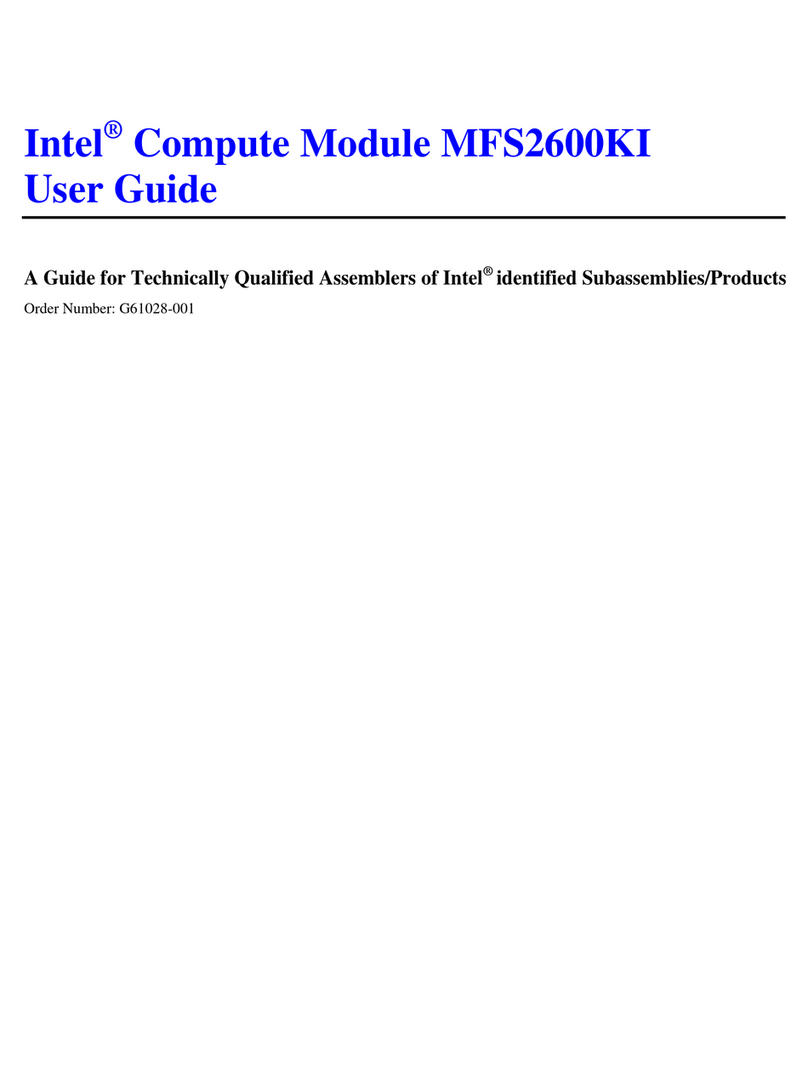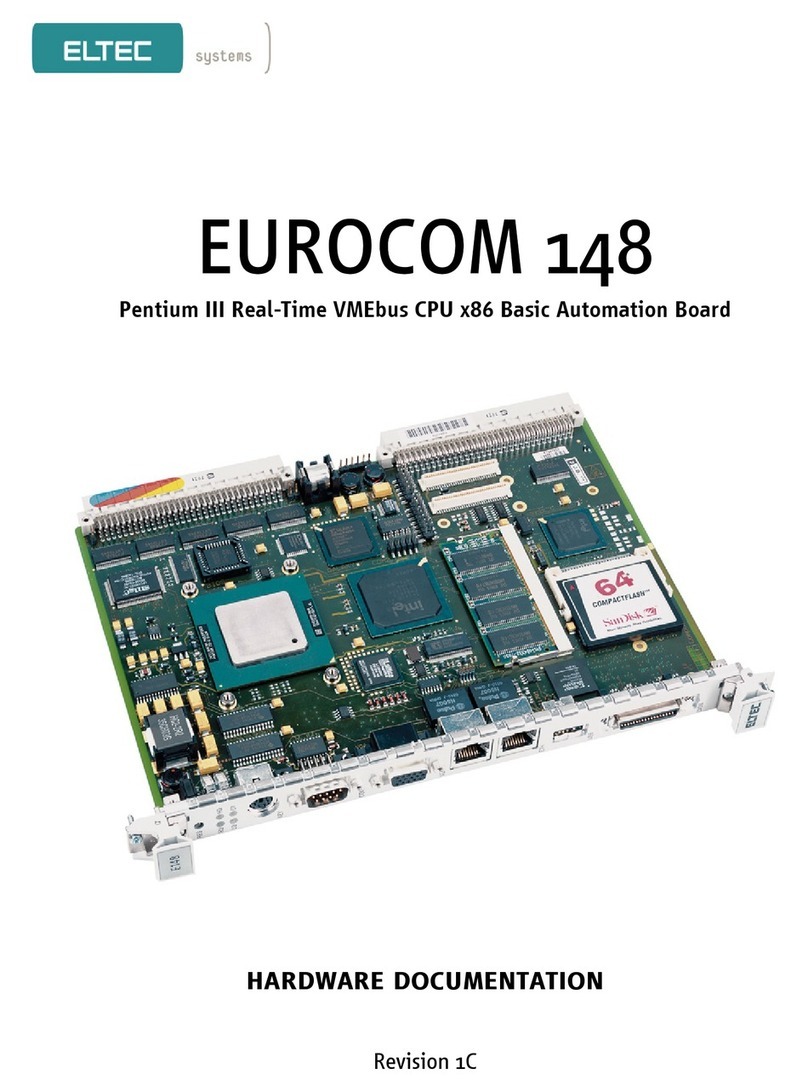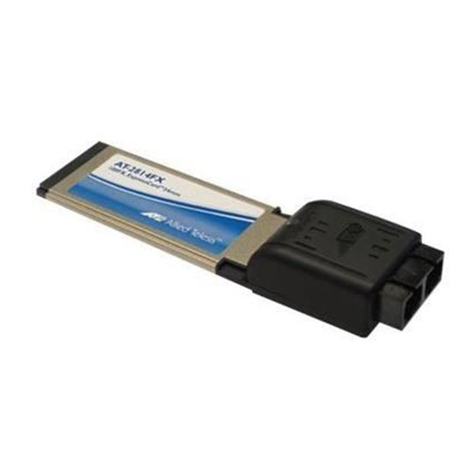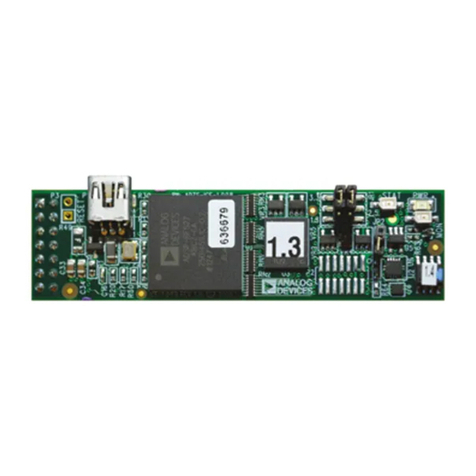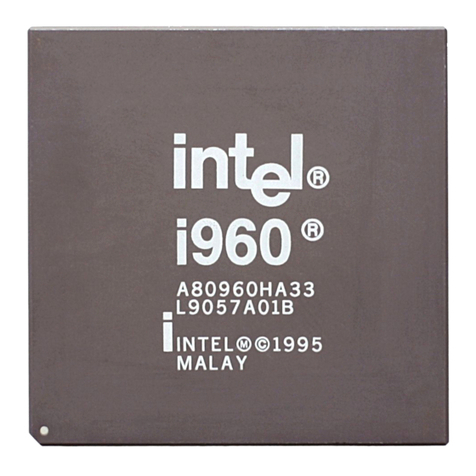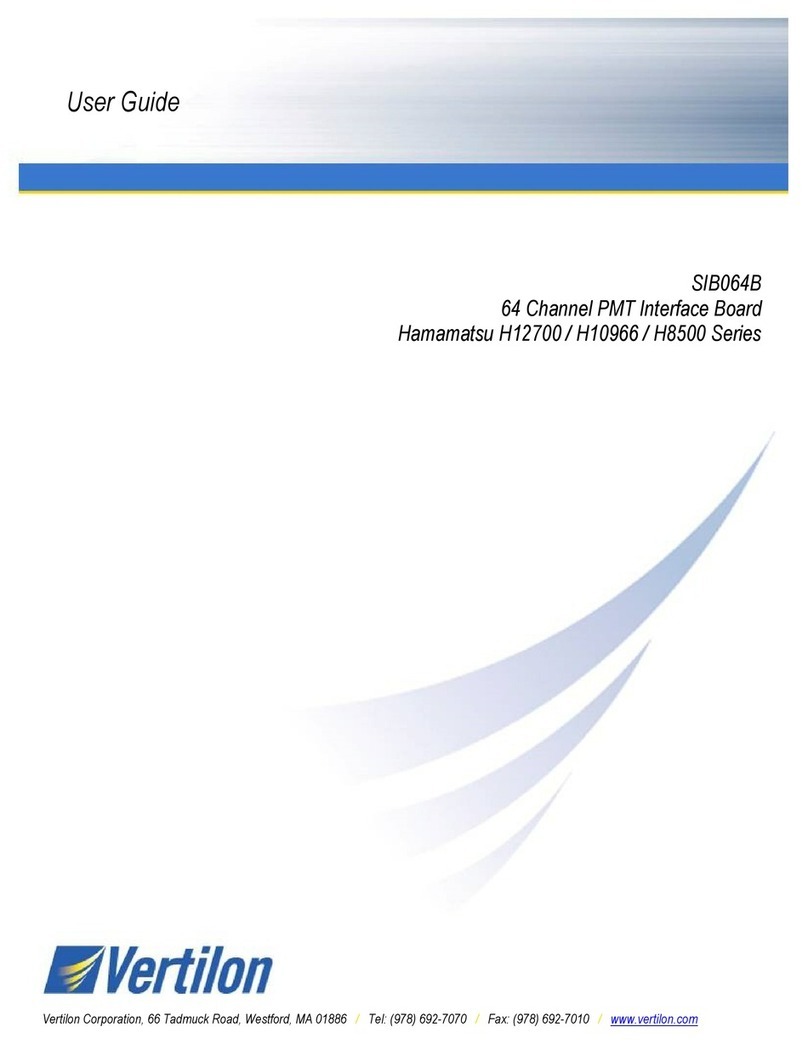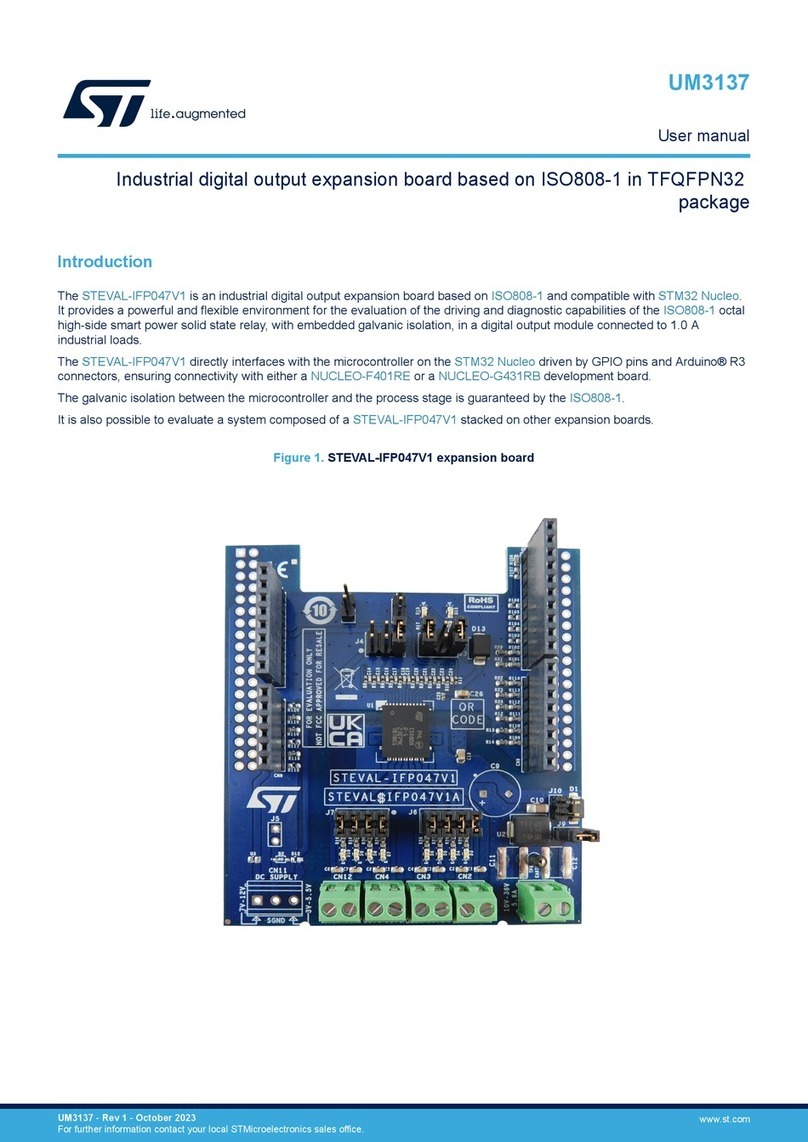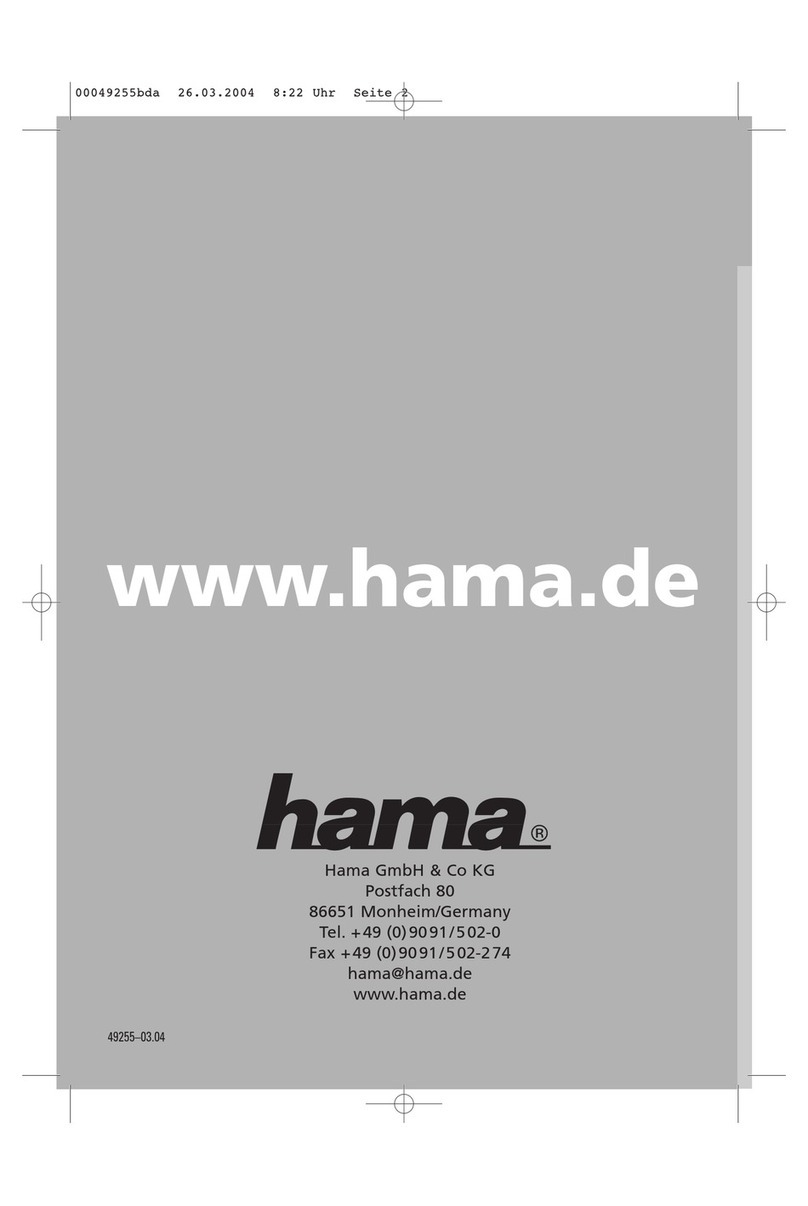BONFIGLIOLI EM-RES-02 User manual

AND UTOMATION OLUTIONSAS
IPNDUSTRY ROCESS
ACTIVE and
ACTIVE Cube
Expansion Module EM-RES-02
GB
Frequency Inverter 230 V / 400 V

08/06 1
General points on the documentation
The present supplement of the documentation is valid for the frequency inverter se-
ries ACT and ACU. The information necessary for the assembly and application of
the EM-RES-02 expansion module is documented in this guidance.
For better clarity, the user documentation is structured according to the customer-
specific demands made of the frequency inverter.
Brief instructions
The brief instructions describe the fundamental steps for mechanical and electrical
installation of the frequency inverter. The guided commissioningsupports you in the
selection of necessary parameters and the software configuration of the frequency
inverter.
Operating instructions
The operating instructions document the complete functionality of the frequency in-
verter. The parameters necessary for specific applications for adaptation to the ap-
plication and the extensive additional functions are described in detail.
Application manual
The application manual supplements the documentation for purposeful installation and
commissioning of the frequency inverter. Information on various subjects connected
with the use of the frequency inverter is described specific to the application.
Installation instructions
The installation instructions describe the mechanical installation and use of devices
which differ from those described in the brief instructions and the operating instruc-
tions.
The documentation and additional information can be requested via your local repre-
sentation of the company BONFIGLIOLI.
The following pictograms and signal words are used in the documentation:
Danger!
means a directly threatening danger. Death, serious damage to persons and consider-
able damage to property will occur if the precautionary measure is not taken.
Warning!
marks a possible threat. Death, serious damage to persons and considerable damage
to property can be the consequence if attention is not paid to the text.
Caution!
refers to an indirect threat. Damage to people or property can be the result.
Attention!
refers to a possible operational behavior or an undesired condition, which can occur in
accordance with the reference text.
Note
marks information, which facilitates handling for you and supplements the corre-
sponding part of the documentation.
Warning! In installation and commissioning, comply with the information in the
documentation. You as a qualified person must have read the documenta-
tion carefully and understood it. Comply with the safety instructions. For
the purposes of the instructions, "qualified person" designates a person
acquainted with the erection, assembly, commissioning and operation of
the frequency inverters and possessing the qualification correspondingto
the activity.

2 08/06
TABLE OF CONTENTS
1General safety and application information .................................................................. 3
1.1 General information................................................................................................. 3
1.2 Proper use................................................................................................................ 3
1.3 Transport and storage ............................................................................................. 4
1.4 Handling and positioning......................................................................................... 4
1.5 Electrical connection................................................................................................ 4
1.6 Operation information............................................................................................. 4
1.7 Maintenance and service......................................................................................... 4
2Introduction................................................................................................................... 5
3Installation of the EM-RES-02 expansion module......................................................... 6
3.1 General .................................................................................................................... 6
3.2 Mechanical installation............................................................................................ 6
3.3 Electrical installation ............................................................................................... 8
3.3.1 Circuit diagram........................................................................................................8
3.3.2 Control Sockets .......................................................................................................9
4Control inputs and outputs .......................................................................................... 10
4.1 Analog input EM-S1INA........................................................................................ 10
4.1.1 General.................................................................................................................10
4.1.2 Configuration voltage/current input.........................................................................10
4.1.3 Characteristic ........................................................................................................11
4.1.4 Operation modes...................................................................................................11
4.1.4.1 Examples........................................................................................................12
4.1.5 Scaling..................................................................................................................14
4.1.6 Tolerance band and hysteresis................................................................................15
4.1.7 Error and warning behavior ....................................................................................16
4.1.8 Adjustment ...........................................................................................................17
4.1.9 Filter time constant................................................................................................17
4.2 Resolver input EM-RES.......................................................................................... 18
4.2.1 Offset...................................................................................................................18
4.2.2 Actual speed source...............................................................................................21
4.3 Frequency and percentage reference channel ...................................................... 21
4.4 Actual value display............................................................................................... 22
4.5 Repetition frequency output EM-RFOUT ............................................................... 22
5Parameter list............................................................................................................... 23
5.1 Actual value menu (VAL)....................................................................................... 23
5.2 Parameter menu (PARA) ....................................................................................... 23
6Annex ...........................................................................................................................24
6.1 Error messages ...................................................................................................... 24

08/06 3
1General safety and application information
This documentation has been created with greatest care and has been extensively and
repeatedly checked. For reasons of clarity, we have not been able to take all detailed
information on all the types of the products and also not every ima
g
inable case o
f
positionin
g
, operation or maintenance into account. If you require further information
or if particular problems not treated extensively enough in the operatin
g
instructions
occur, you can obtain the necessary information via the local representation of the
company BONFIGLIOLI.
In addition, we would point out that the contents of these operatin
g
instructions are
not part of an earlier or existin
g
a
g
reement, assurance or le
g
al relationship, nor are
they intended to amend them. All the manufacturer's obligations result from the pur-
chase contract in question, which also contains the completely and solely valid war-
ranty regulation. These contractual warranty provisions are neither extended nor lim-
ited by the implementation of these operating instructions.
T
he manufacturer reserves the ri
g
ht to correct or amend the contents and produc
t
information as well as omissions without specific announcement and assumes no kind
of liability for damage, injuries or expenditure to be put down to the aforementioned
reasons.
1.1 General information
Warning! BONFIGLIOLI VECTRON frequency inverters have high voltage levels dur-
in
g
operatin
g
, dependin
g
on their protection class, drive movin
g
parts and
have hot surfaces.
In the event of inadmissible removal of the necessary covers, improper
use, wron
g
installation or operation, there is the risk of serious dama
g
e to
persons or property.
T
o avoid the dama
g
e, only qualified staff may carry out the transport,
installation, setup or maintenance work required. Comply with the stan-
dards EN 50178, IEC 60364 (Cenelec HD 384 or DIN VDE 0100),
IEC 60664-1 (Cenelec HD 625 or VDE 0110-1), BGV A2 (VBG 4) and na-
tional provisions. Qualified persons within the meaning of this principal
safety information are people acquainted with the erection, fitting, com-
missionin
g
and operatin
g
of frequency inverters and the possible hazards
and in possession of qualifications matching their activities.
1.2 Proper use
Warning! The frequency inverters are electrical drive components intended for in-
stallation in industrial plant or machines. Commissioning and start of in-
tended operation are not allowed until it has been established that the
machine corresponds to the provisions of the EC machine directive
98/37/EEC and EN 60204. According to the CE sign, the frequency invert-
ers additionally fulfill the requirements of the low-volta
g
e directive
73/23/EEC and the standards EN 50178 / DIN VDE 0160 and EN 61800-2.
Responsibility for compliance with the EMC directive 89/336/EEC is with
the user. Frequency inverters are available in a limited way and as com-
ponents exclusively intended for professional use within the meanin
g
o
f
the standard EN 61000-3-2.
With the issue of the UL certificate accordin
g
to UL508c, the requirements
of the CSA Standard C22.2-No. 14-95 have also been fulfilled.
The technical data and the information on connection and ambient condi-
tions stated on the ratin
g
plate and the documentation must be complied
with. The instructions must have been read and understood before start-
ing work at the device.

4 08/06
1.3 Transport and storage
T
ransport and stora
g
e are to be done appropriate in the ori
g
inal packin
g
. Store the
units only in dry rooms, which are protected against dust and moisture and are sub-
j
ected to little temperature deviations only. Observe the climatic conditions accordin
g
to standard EN 50178 and to the information on the label of the ori
g
inal packin
g
. The
duration of storage without connection to the admissible reference volta
g
e may no
t
exceed one year.
1.4 Handling and positioning
Warning! Damaged or destroyed components may not be put into operation be-
cause they may be a health hazard.
The frequency inverters are to be used accordin
g
to the documentation, the directives
and the standards. Handle carefully and avoid mechanical overload. Do not bend the
components or chan
g
e the isolation distances. Do not touch electronic components o
r
contacts. The devices contain construction elements with a risk of electrostatic, which
can easily be damaged by improper handling. Any use of damaged or destroyed com-
ponents shall be considered as a non-compliance with the applicable standards. Do
not remove any warning signs from the device.
1.5 Electrical connection
Warning! Before any assembly or connection work, de-energize the frequency in-
verter. Make sure that the frequency inverter is de-energized.
Do not touch the sockets, because the capacitors may still be charged.
Comply with the information
g
iven in the operatin
g
instructions and on
the frequency inverter label.
While workin
g
on the frequency inverters, obey the applicable standards BGV A2 (VBG
4), VDE 0100 and other national directives. Comply with the information in the docu-
mentation on electrical installation and the relevant directives. Responsibility for com-
pliance with and examination of the limit values of the EMC product standard EN
61800-3 for variable-speed electrical drive mechanisms is with the manufacturer o
f
the industrial plant or machine.
T
he documentation contains information on installation correct for EMC. The cables
connected to the frequency inverters may not be subjected to an isolation test with a
high test voltage without previous circuit measures.
1.6 Operation information
Warning! Before commissionin
g
and the start of the intended operation, attach all
the covers and check the sockets. Check additional monitoring and pro-
tective devices pursuant to EN 60204 and the safety directives applicable
in each case (e.
g
. Workin
g
Machines Act, Accident Prevention Directives
etc.).
No connection work may be performed, while the system is in operation.
1.7 Maintenance and service
Warning! Unauthorized openin
g
and improper interventions can lead to physical
in
j
ury or dama
g
e to property. Repairs on the frequency inverters may
only be done by the manufacturer or persons authorized by the latter.

08/06 5
2Introduction
This document describes the possibilities and the properties of the EM-RES-02 expan-
sion module for the frequency inverters of the ACT and ACU device series.
Note: This document exclusively describes the EM-RES-02 expansion module. It
is not to be understood as fundamental information for the operation of
the frequency inverters of the ACT and ACU device series.
The EM-RES-02 expansion module is an optional hardware component to extend the
functionality of the frequency inverter. It enables the data exchange within the net-
work between the components which have been directly connected, for example con-
trol and regulation elements.
The EM-RES-02 expansion module is supported from device series ACU and as
from software version 4.1.0 of device series ACT.
The EM-RES-02 module extends the functionality of the frequency inverters of the
ACT and ACU device series by the following additional functions:
−Analog input
(second bipolar analog input)
−Resolver input
−Repetition frequency output
Note: The EM-RES-02 expansion module has been enclosed with the frequency
inverter as a separate component and must be fitted by the user. This is
described in detail in the chapter "Mechanical Installation".
To assemble the expansion module it can be simply plugged into the frequency in-
verter of the ACT and ACU device series.
Warning! The assembly is done before the frequency inverter is put into operation,
and only in a voltage-free state.
The pluggable sockets of the expansion module enable economical overall fittingwith
a safe function.

6 08/06
3Installation of the EM-RES-02 expansion module
3.1 General
The mechanical and electrical installation of the EM-RES-02 expansion module is to be
carried out by qualified personnel accordin
g
to the
g
eneral and re
g
ional safety and
installation directives. Safe operation of the frequency inverter requires that the
documentation and the device specification be complied with durin
g
installation and
start of operation. For specific areas of application further provisions and
g
uidelines
must be complied with where applicable.
T
he frequency inverters are desi
g
ned accordin
g
to the requirements and limit values
of product standard EN 61800-3 with an interference immunity factor (EMI) for opera-
tion in industrial applications. The electromagnetic interference is to be avoided by
expert installation and observation of the specific product information.
For further information, refer to the operating instructions of the frequency inverter.
Danger! All connection sockets where dangerous volta
g
e levels may be presen
t
(e.g. motor connection sockets, mains sockets, fuse connection sockets,
etc.) must be protected against direct contact.
3.2 Mechanical installation
Danger! If the following instructions are not complied with, there is direct dan
g
e
r
with possible consequences of death or severe in
j
ury by electrical current.
T
o disre
g
ard the instructions can lead to destruction of the frequenc
y
inverter and/or of the expansion module.
•Before assembly or disassembly of the EM-RES-02 expansion module, the fre-
quency inverter must be de-ener
g
ized. Take appropriate measures to make sure i
t
is not energized unintentionally.
•Make sure that the frequency inverter is de-energized.
Danger! The mains, direct voltage and motor sockets can be live with dangerous
volta
g
e after disconnection of the frequency inverter. Work may only be
done on the device after a waitin
g
period of some minutes until the DC
link capacitors have been discharged.

08/06 7
The EM-RES-02 expansion module is supplied in a housin
g
for assembly on the lowe
r
slot of the frequency inverter.
•Remove the lower cover (1) of the frequency inverter.
The slot for the EM-RES-02 expansion module becomes accessible.
1
Caution! The EM-RES-02 expansion module (2) is pre-fitted in a housin
g
. Do NO
T
touch the PCB visible on the back, as modules may be damaged.
•Plug the EM-RES-02 expansion module (2) onto the slot (3).
2
3
•Re-install the lower cover (1).
This completes the assembly procedure.
When the supply voltage of the frequency inverter is switched on, the EM-RES-02
expansion module is ready for operation.
1

8 08/06
3.3 Electrical installation
Danger! If the following instructions are not complied with, there is direct dan
g
e
r
with the possible consequences of death or severe in
j
ury by electrical
current. Further, failure to comply can lead to destruction of the fre-
quency inverter and/or of the expansion module.
•Before electrical installation of the EM-RES-02 expansion module, the frequency
inverter must be de-ener
g
ized. Take appropriate measures to make sure it is not
energized unintentionally.
•Make sure that the frequency inverter is de-energized.
Danger! The mains, direct voltage and motor sockets can have dangerous volta
g
es
even after disconnection of the frequency inverter. Work may only be
done on the device after a waitin
g
period of some minutes until the DC
link capacitors have been discharged.
3.3.1 Circuit diagram
6
X410A
X410B
5
6
7
5
EM-RFOUT B+
EM-RFOUTA+
7
3
1
2
4
B
B
C
EM-S1INA
A
D
GND
EM-RFOUT R-
EM-RFOUT R+
EM-RFOUT B-
EM-RES SIN+
4
EM-RES REF-
EM-RES REF+
3
1
2EM-RES SIN-
EM-RES COS-
EM-RES COS+
EM-RFOUTA-
R
D
1
1
2
2
A
Resolver interface EM-RES
A
1
Field voltage UREF eff = 4 V, Imax = 60 mA
A
2
Input voltage Umin eff = 2 V, voltage-proof until 30 V
The resolver interface is suitable for connecting commercial resolvers with the follow-
ing specifications:
Input impedance > 95 Ωat 5 kHz, 10 kHz, 20 kHz, no. of pole pairs: up to 24,
30000 rpm at no. of pole pairs = 1
phase displacement (at field frequency): 7 ° (5 kHz), 14 ° (10 kHz), 26 ° (20 kHz)
B
Repetition frequency output EM-RFOUT
B
1
Frequency signal, fmax = 512 kHz, overload and short-circuit proof,
Imax = ±60 mA at min. permissible line termination 150 Ω,
TTL (push-pull) according to specification RS-422A / RS-485: Umax = 5 V
B
2
Reference signal
C
Analog input EM-S1INA
Analog signal, resolution 12 Bit,
Umax= ±10 V (Ri = 100 kΩ), Imax = ±20 mA (Ri = 250 Ω)

08/06 9
3.3.2 Control Sockets
The control and software functionality can be freely configured for economical opera-
tion with a safe function.
Expansion module EM-RES-02
0.14 … 1.5 mm
AWG 30 … 16
2
Wieland DST85 / RM3,5
0.14 … 1.5 mm
AWG 30 … 16
2
0.25 … 1.0 mm
AWG 22 … 18
2
0.25 … 0.75 mm
AWG 22 … 20
2
0.2 … 0.3 Nm
1.8 … 2.7 lb-in
Caution! The control inputs and outputs must be connected and disconnected free
of electrical power. Otherwise components may be damaged.
Attention! In order to minimize electromagnetic interference and to obtain a
g
ood
signal quality:
•Use a shielded, pair-twisted (SIN+ with SIN-, COS+ with COS-, both
field signal lines) cable for connecting the resolver.
•The line screen is to be connected to PE on a plane at both ends.
Socket X410A
Ter. Description
1 Resolver field signal EM-RES REF+
2 Resolver field signal EM-RES REF-
3 Resolver input EM-RES SIN-
4 Resolver input EM-RES SIN+
5 Resolver input EM-RES COS-
6 Resolver input EM-RES COS+
7 Repetition frequency output EM-RFOUT A+ 1)
Socket X410B
Ter. Description
1 Repetition frequency output EM-RFOUT A- -1)
2 Repetition frequency output EM-RFOUT B+ 1)
3 Repetition frequency output EM-RFOUT B- 1)
4 Analog input EM-S1INA, resolution 12 bit,
Umax= ±10 V (Ri = 100 kΩ),
Imax = ±20 mA (Ri = 250 Ω)
5 Repetition frequency output EM-RFOUT R+
6 Repetition frequency output EM-RFOUT R-
7 Earth / GND
1) The repetition frequency output is interference voltage proof in a range between
-5 V to +10 V.

10 08/06
4Control inputs and outputs
4.1 Analog input EM-S1INA
4.1.1 General
The analog input of the EM-RES-02 expansion module can optionally be confi
g
ured as
a voltage or a current input. Parameterization of the input signal is done by the defini-
tion of a linear characteristic and assignment as a
−reference value source
(can be selected via the parameter Reference frequency source 475),
−reference percentage source
(can be selected via the parameter Reference percentage source 476),
−actual percentage source
(can be selected via the parameter Actual percentage source 478, in configura-
tion x11) or
−limit value sources
(can be selected via the parameters 734…737).
4.1.2 Configuration voltage/current input
The analog input of the EM-RES-02 expansion module has been confi
g
ured in the
factory setting for a voltage signal of +/- 10 V. Switch S3 enables a switch-over of the
operation mode for an analog current signal of +/-20 mA.
X410A
X
410B
S3
Operation mode – switch S3 Function
OFF - Voltage input OFF (downward) –
analog input EM-S1INA is configured for a
voltage signal.
ON - Current input ON (upward) –
analog input EM-S1INA is configured for a
current signal.

08/06 11
4.1.3 Characteristic
The mapping of the analog input signals onto a frequency or percentage reference
value is possible for various demands. The parameterization is to be done via two
points of the linear characteristic of the reference channel.
T
he characteristic point 1, with the coordinates X1 and Y1, and the characteristic point
2, with the coordinates X2 and Y2, can be set in four parameters.
T
he characteristic points X1 and X2 are stated as percenta
g
es, as the analo
g
input can
be switched as a current or voltage input via switch S3.
Parameter Setting
No. Description Min. Max. Fact. sett.
564 Characteristic point X1 -100.00 % 100.00 % -98.00 %
565 Characteristic point Y1 -100.00 % 100.00 % -100.00 %
566 Characteristic point X2 -100.00 % 100.00 % 98.00 %
567 Characteristic point Y2 -100.00 % 100.00 % 100.00 %
The coordinates of the characteristic points are related as a percenta
g
e to the analo
g
signal, with 10 V or 20 mA, and the parameter Maximum Frequency 419 or parame-
ter Maximum reference percentage 519. The chan
g
e of direction of rotation can be
done via the digital inputs of the frequency inverter and/or by selecting the character-
istic points.
The definition of the analog input characteristic can be calculated via the two-poin
t
form of the straight-line equation. The speed Y of the drive mechanism is controlled
according to the analog control signal X.
()
Y1X1X
X1-X2 Y1-Y2
Y +−⋅=
Attention! Monitoring of the analog input signal via the parameter
E
rror/Warnin
g
Behavior 563 demands a check of the characteristic parameters. Sensible
use is only possible if the Characteristic point X1 564 is in the positive
range.
4.1.4 Operation modes
The operation modes of the analog input characteristic enable application-related scal-
in
g
as a supplement to the characteristic points stated. One of the four linear types o
f
characteristic is selected for adaptation of the si
g
nal for the analo
g
input si
g
nal via the
parameter Operation mode 562.
If the characteristic points are not suited for the type of characteristic selected, the
characteristic points are corrected internally.
Operation mode Function
1 - bipolar The analog input signal is mapped onto the reference
figure according to the characteristic points (X1/Y1)
and (X2/Y2).
11 - unipolar With a negative parameter value of the characteristic
points X1 or X2, they are mapped to the reference
value zero.
21 - unipolar
2…10 V / 4…20 mA If the characteristic points X1 or X2 have been set
with a negative parameter figure or smaller than 0%,
the input characteristic is mapped to the reference
value 20%.
101 - bipolar absolute value Negative parameter values of the characteristic points
Y1 or Y2 are mapped as a positive reference value in
the characteristic.
Further information on the operation modes stated in the table can be found in the
following chapter "Examples“.

12 08/06
4.1.4.1 Examples
The analog input signal is mapped onto a reference value as a function of the charac-
teristic. The following examples show the operation modes for an analog voltage sig-
nal. The parameter Minimum Frequency 418 is set to the value 0.00 Hz. The charac-
teristic point 100% for the Y-axis corresponds to the parameter Maximum Frequency
419 of 50.00 Hz in the examples.
Attention!
T
he various operation modes chan
g
e the input characteristic as a function
of the parameterized characteristic points. In the followin
g
examples, the
areas of the coordinate system from which a characteristic point is dis-
placed are marked.
Operation mode "1 – bipolar"
In operation mode "1 – bipolar“, the characteristic of the analo
g
input can be freel
y
set by stating two characteristic points.
Characteristic point 1:
X1 = -70.00% · 10 V = -7.00 V
Y1 = -50.00% · 50.00 Hz = -25.00 Hz
Characteristic point 2:
X2 = 80.00% · 10 V = 8.00 V
Y2 = 85.00% · 50.00 Hz = 42.50 Hz
Tolerance band:
ΔX = 2.00% · 10 V = 0.20 V
(X2=80% / Y2=85%)
8V
Y
X
-25Hz
42.50Hz
(X1=-70% / Y1=-50%)
-7V
T
he chan
g
e of direction of rotation is done
in the example at an analo
g
input si
g
nal
of -1.44 V, with a tolerance band of ±0.20
V.
Operation mode "11 – unipolar"
In operation mode "11 – unipolar“, the characteristic points are displaced to the ori
g
in
of the characteristics with a negative value for the X-axis.
Characteristic point 1:
X1 = -70.00% · 10 V = -7.00 V
Y1 = -50.00% · 50.00 Hz = -25.00 Hz
Characteristic point 2:
X2 = 80.00% · 10 V = 8.00 V
Y2 = 85.00% · 50.00 Hz = 42.50 Hz
Tolerance band:
ΔX = 2.00% · 10 V = 0.20 V
(X2=80% / Y2=85%)
8V
Y
X
-25Hz
42.50Hz
(X1=-70% / Y1=-50%)
-7V
The characteristic point 1 has been dis-
placed to the origin. The parameter Tol-
erance band 560 is not taken into ac-
count in this example, as no chan
g
e o
f
sign of the reference frequency value
takes place.

08/06 13
Characteristic point 1:
X1 = 30.00 % · 10 V = 3.00 V
Y1 = -50.00 % · 50.00 Hz = -25.00 Hz
Characteristic point 2:
X2 = 80.00 % · 10 V = 8.00 V
Y2 = 85.00 % · 50.00 Hz = 42.50 Hz
Tolerance band:
ΔX = 2.00 % · 10 V = 0.20 V
(X2=80% / Y2=85%)
8.00V
Y
X
-25.00Hz
42.50Hz
(X1=30% / Y1=-50%)
3.00V
T
he chan
g
e of direction of rotation is done
in the example at an analo
g
input si
g
nal o
f
4.85 V, with a tolerance band of ±0.20 V.
Operation mode "21 – unipolar 2…10 V / 4…20 mA"
This operation mode limits the input characteristic to the ran
g
e between 20% and
100% of the analog signal. If the value for a characteristic point of the X-axis is out-
side 0%, it is mapped to the characteristic point (2 V / 0 Hz).
The characteristic point on the X-axis is calculated according to the following formula:
20.00%20.00%)-(100.00%XvalueparameterXpointsticcharacteri +
⋅
=
Characteristic point 1:
X1 = [-70.00% · (100.00% - 20.00%)
+ 20.00% ] · 10 V = -7.60 V
Y1 = -50.00% · 50.00 Hz = -25.00 Hz
Characteristic point 2:
X2 = [80.00% · (100.00% - 20.00%)
+ 20.00% ] · 10 V = 8.40 V
Y2 = 85.00% · 50.00 Hz = 42.50 Hz
Tolerance band:
ΔX = [2.00% · (100.00% - 20.00%)
· 10 V] = 0.16 V
(X2=80% / Y2=85%)
8.40V
Y
X
-25.00Hz
42.50Hz
(X1=-70% / Y1=-50%)
-7.60V
The characteristic point 1 has been dis-
placed to the point (2.00 V / 0.00 Hz). The
parameter Tolerance band 560 is not
used in this example, as no chan
g
e of si
g
n
of the reference frequency value takes
place.
Characteristic point 1:
X1 = [30.00% · (100.00% - 20.00%)
+ 20.00% ] · 10 V = 4.40 V
Y1 = -50.00% · 50.00 Hz = -25.00 Hz
Characteristic point 2:
X2 = [80.00% · (100.00% - 20.00%)
+ 20.00% ] · 10 V = 8.40 V
Y2 = 85.00% · 50.00 Hz = 42.50 Hz
Tolerance band:
ΔX = [2.00% · (100.00% - 20.00%)
· 10 V] = 0.16 V
(X2=80% / Y2=85%)
8.40V
Y
X
-25.00Hz
42.50Hz
(X1=30% / Y1=-50%)
4.40V
T
he chan
g
e of direction of rotation is done
in the example at an analo
g
input si
g
nal o
f
5.88 V, with a tolerance band of ±0.16 V.

14 08/06
Operation mode "101 – bipolar absolute value"
The operation mode "101 – bipolar absolute value“ maps the bipolar analo
g
si
g
nal
onto a unipolar input characteristic. The formation of the absolute amount takes the
characteristic into account comparable to the "bipolar" operation mode, but the char-
acteristic points are reflected on the X-axis with a negative value for the Y-axis.
Characteristic point 1:
X1 = -70.00% · 10 V = -7.00 V
Y1 = -50.00% · 50.00 Hz = -25.00 Hz
Characteristic point 2:
X2 = 80.00% · 10 V = 8.00 V
Y2 = 85.00% · 50.00 Hz = 42.50 Hz
Tolerance band:
ΔX = 2.00% · 10 V = 0.20 V
(X2=80% / Y2=85%)
8V
Y
X
-25.00Hz
42.50Hz
(X1=-70% / Y1=-50%)
-7V
25.00Hz
In this example, the reference value is
a
g
ain increased from an analo
g
input
signal of -1.44 V with a tolerance band o
f
±0.20 V. The theoretical chan
g
e of si
g
n o
f
the reference value is used and leads to
the tolerance band stated.
T
here is no chan
g
e of the direction o
f
rotation.
4.1.5 Scaling
The analog input signal is mapped to the freely configurable characteristic. The maxi-
mum admissible settin
g
ran
g
e of the drive mechanism is to be set accordin
g
to the
confi
g
uration selected via the frequency limits or the percenta
g
e value limits. In the
parameterization of a bipolar characteristic, the minimum and maximum limit for both
directions of rotation are taken over. The percenta
g
e values of the characteristic
points are relative to the maximum limits selected.
Parameter Setting
No. Description Min. Max. Fact. sett.
418 Minimum Frequency 0.00 Hz 999.99 Hz 3.50 Hz
419 Maximum Frequency 0.00 Hz 999.99 Hz 50.00 Hz
T
he controls use the maximum value of the output frequency, which is calculated from
the maximum frequency 419 and the compensated slip of the drive mechanism. The
frequency limits define the speed ran
g
e of the drive mechanism and the reference
percenta
g
e values supplement the scalin
g
of the input characteristic accordin
g
to the
configured functions.
Parameter Setting
No. Description Min. Max. Fact. sett.
518 Minimum reference percentage 0.00 % 300.00 % 0.00 %
519 Maximum reference percentage 0.00 % 300.00 % 100.00 %

08/06 15
4.1.6 Tolerance band and hysteresis
T
he analo
g
input characteristic with chan
g
e of si
g
n of the reference value can be
adapted by the parameter Tolerance band 560 of the application. The tolerance band
to be defined extends the zero crossin
g
of the speed relative to the analo
g
control
si
g
nal. The percenta
g
e parameter value is relative to the maximum current or volta
g
e
signal.
Parameter Setting
No. Description Min. Max. Fact. sett.
560 Tolerance band 0.00 % 25.00 % 2.00 %
(X1
/
Y1)
-10V
(-20mA) +10V
(+20mA)
(X2
/
Y2)
pos. max. value
neg. max. value
Without tolerance band
(
X
1
/
Y1)
-10V
(-20mA) +10V
(X2
/
Y2)
pos. max. value
Tolerance band
neg. max. value
With tolerance band
The Minimum Frequency 418 or the Minimum reference percentage 518 set in the
factory extends the parameterized tolerance band to the hysteresis.
(X1
/
Y1)
(X2
/
Y2)
pos. max. value
pos. min. value
neg. min. value
neg. max. value
Tolerance band
With tolerance band and minimum value
For example, the output variable resulting from the positive input signals is kept at the
positive minimum value until the input si
g
nal is below the value for the tolerance band
in a negative direction. After that proceed on the set characteristic.

16 08/06
4.1.7 Error and warning behavior
The monitoring of the analog input signal necessary accordin
g
to the application is to
be configured via the parameter Error/Warning behavior 563.
Operation mode Function
0 - Off The input signal is not monitored.
1 - Warning < 1 V / 2 mA If the input signal is less than 1 V or 2 mA, there
is a warning message.
2 - Shutdown < 1 V / 2 mA If the input signal is less than 1 V or 2 mA, there
is a warning message, the drive mechanism is
decelerated according to stopping behavior 1.
3 - Fault switch-off
< 1 V / 2 mA
If the input signal is less than 1 V or 2 mA, there
is a warning and fault message and the drive
mechanism stops freely.
T
he monitorin
g
of the analo
g
input si
g
nal is active independent of the release of the
frequency inverter according to the operation mode selected.
In operation mode 2, the drive mechanism is decelerated independent of the stoppin
g
behavior set (Parameter Operation mode 630) accordin
g
to stoppin
g
behavior 1
(shutdown and switch-off). If the set holding time has expired, there is a fault mes-
sage. A repeat start of the drive mechanism is possible by switchin
g
the start si
g
nal on
and off if the fault has been cleared.
Operation mode 3defines the free stoppa
g
e of the drive mechanism, independent o
f
the stopping behavior selected, which is stipulated with the parameter Stop function
630.
Attention! Monitoring of the analog input signal via the parameter
E
rror/Warnin
g
Behavior 563 demands a check of the characteristic parameters.

08/06 17
4.1.8 Adjustment
As a result of component tolerances, it can be necessary to ad
j
ust the analo
g
input.
Parameter Adjustment 568 is used for this purpose.
Operation mode Function
0 - no adjustment Normal operation
1 - Adjustment 0 V / 0 mA Adjustment of the measurement with an analog
signal of 0 V or 0 mA.
2 - Adjustment 10 V / 20 mA Adjustment of the measurement with an analog
signal of 10 V or 20 mA.
Example of the adjustment of the analog input with a voltage signal:
Note:
T
he measurements for the ad
j
ustment are to be done with a suitable
measuring instrument and the correct polarity.
If not, faulty measurements can result.
•Apply 0 V to the analo
g
input; e.
g
. with a wired link from the socket of the analo
g
input X410B.4 to socket X210B.7 (earth/GND) of the frequency inverter.
•Select operation mode "1 - Adjustment 0 V / 0 mA“.
•Apply 10 V to the analog input, e.g. with a wired link from the socket of the ana-
log input to socket X210B.5 (reference output 10 V) of the frequency inverter.
•Select operation mode "2 - Adjustment 10 V / 20 mA“.
4.1.9 Filter time constant
The time constant of the filter for the reference analog value can be set via the pa-
rameter Filter time constant 561.
T
he time constant states the time for which the input si
g
nal is avera
g
ed by means of a
low pass filter, e.g. in order to eliminate fault effects.
The setting range is a range of values between 0 ms and 5000 ms in 15 steps.
Operation mode Function
0 - Time constant 0 ms Filter deactivated – analog reference value is for-
warded unfiltered
2 - Time constant 2 ms
4 - Time constant 4 ms
8 - Time constant 8 ms
16 - Time constant 16 ms
32 - Time constant 32 ms
64 - Time constant 64 ms
128 - Time constant 128 ms
256 - Time constant 256 ms
512 - Time constant 512 ms
1000 - Time constant 1000 ms
2000 - Time constant 2000 ms
3000 - Time constant 3000 ms
4000 - Time constant 4000 ms
5000 - Time constant 5000 ms
Filter activated – averaging of the input signal via
the set value of the filter time constants

18 08/06
4.2 Resolver input EM-RES
The resolver input is used for evaluating the position information from the resolver.
The frequency of the field signal for the resolver can be selected via parameter Opera-
tion Mode 380.
Operation mode Function
5- frequency 5 kHz
10- frequency 10 kHz
20- frequency 20 kHz
Frequency of the reference signal for the resolver
If the no. of resolver pole pairs > 1, the measured electric an
g
le runs throu
g
h the
range of 0°...360° several times during one mechanical revolution.
For the detection of the position an
g
le of the rotor at a synchronous motor, the ratio
of the no. of motor pole pairs to the no. of resolver pole pairs must be an integer.
The no. of pole pairs of the resolver can be adjusted via parameter
N
o. of Pole Pairs
381.
Parameter Function
No. Description Min. Max. Fact. sett.
381 No. of pole pairs 1 24 1
Assignment of the socket:
Resolver field signal EM-RES (X410A.1): REF+
Resolver field signal EM-RES (X410A.2): REF-
Resolver input EM-RES (X410A.3): SIN-
Resolver input EM-RES (X410A.4): SIN+
Resolver input EM-RES (X410A.5): COS-
Resolver input EM-RES (X410A.6): COS+
4.2.1 Offset
In order to enable the start of a synchronous machine, the absolute position of the
rotor must be known. This information is required in order to actuate the stator wind-
ings in the right order depending on the position of the rotor. The position of the ro-
tary field in the synchronous machine must be controlled in order to obtain a continu-
ous movement of the rotor. During first commissioning, the position of the rotor wind-
ing of the resolver is adjusted to the rotor displacement angle of the synchronous mo-
tor by ad
j
ustin
g
the offset. For operatin
g
a synchronous machine with resolver, the
offset must be adjusted in order to obtain perfectly true runnin
g
and a maximum
torque.
The correct Offset 382 is adjusted when the flux-forming voltage 235 reaches the
value 0 (approximately) while the motor is turning.
Parameter Function
No. Description Min. Max. Fact. sett.
382 Offset -360.0° 360.0° 0.0°
The offset can be determined and adjusted as follows:
•Durin
g
first commissionin
g
"SEtUP" will be displayed in the control unit. Press ESC
to stop this operation. The guided commissioning („SETUP“) is performed after ad-
justing the offset.
•Open the parameter menu "PARA" and enter the machine data indicated on the
type plate or the data sheet of the motor.

08/06 19
•Set parameter Operation Mode 380 to the frequency value of the field si
g
nal fo
r
the resolver.
•Adjust parameter No. of Pole Pairs 381 to the number of pole pairs of the re-
solver.
Before adjusting the offset, take the following safety precautions:
•Disable the frequency inverter via digital input S1IND (controller release).
•If possible, uncouple the motor from the load so that the motor shaft turns freely.
If installed, release the mechanical brake.
If uncoupling is not possible, make sure that the motor is loaded as little as possi-
ble.
Warning! In certain circumstances, the motor speed may reach hi
g
h values. If the
motor is not uncoupled from the load, personal and material dama
g
e
may result. To avoid such dama
g
e, make the followin
g
settin
g
s in any
case.
•Set the max. permissible output frequency of the frequency inverter to a low fre-
quency value via parameter Switch-Off Limit 417. Select the frequency value such
that uncontrolled acceleration of the motor ("overspeedin
g
") is detected at an earl
y
stage. This limitation is necessary in order to avoid personal and material damage.
•Set parameter Current Limit 728 of the speed controller to a low current value
(e.
g
. 10% of the rated motor current). In this way it is made sure that there are no
excessive currents of the offset is set incorrectly.
•Turn motor shaft manually. Check the sense of rotation of the resolver via the ac-
tual value of parameter Frequency Speed Sensor 2 219. In the case of a clock-wise
rotation of the motor shaft, positive values are displayed for the actual frequency
value. If the displayed sense of rotation does not correspond to the actual sense o
f
rotation, change the connections SIN+ and SIN- at socket X410A of the frequenc
y
inverter.
The Offset 382 must be between 0° and 360°, divided by the number of motor pole
pairs. If the number of resolver pole pairs is higher than 1, the possible range is be-
tween 0° and the max. offset.
number of motor pole pairs / number of resolver pole pairs
360
OffsetMax.
°
=
If the adjusted value is changed by the max. offset, this does not affect the flux-
f
orming voltage 235.
•Adjust a low reference speed value (approx. 10% lower than the Switch-off Limi
t
Frequency 417), and enable the frequency inverter via digital input S1IND (con-
troller release) and S2IND (start clock-wise operation) in order to accelerate the
motor.
•If an overcurrent is detected or a fault messa
g
e is issued due to an overload, the
g
uided commissionin
g
(setup) will start first. Confirm the machine and resolve
r
data. After completion of the guided commissioning, adjust the parameter Limi
t
Current 728 to a low value a
g
ain because this value was overwritten durin
g
the
guided commissioning.
Table of contents
Popular Computer Hardware manuals by other brands
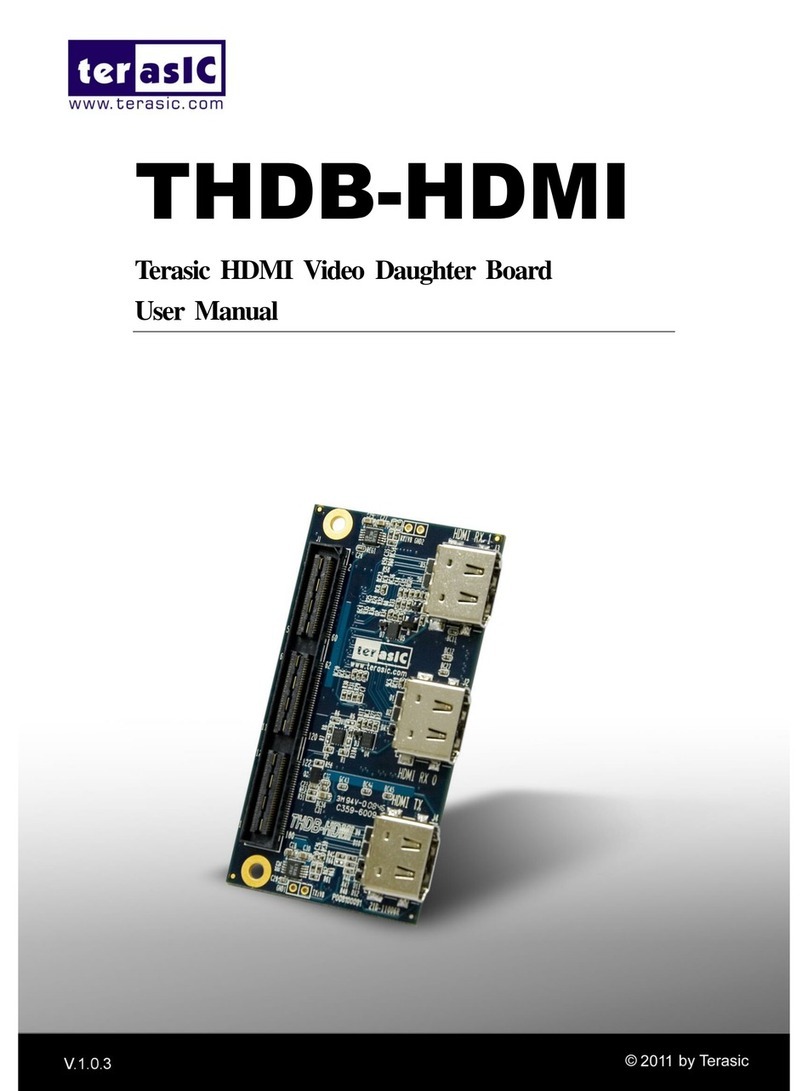
Terasic
Terasic THDB-HDMI user manual
GigaDevice Semiconductor
GigaDevice Semiconductor GD32W515 Series Hardware development guide
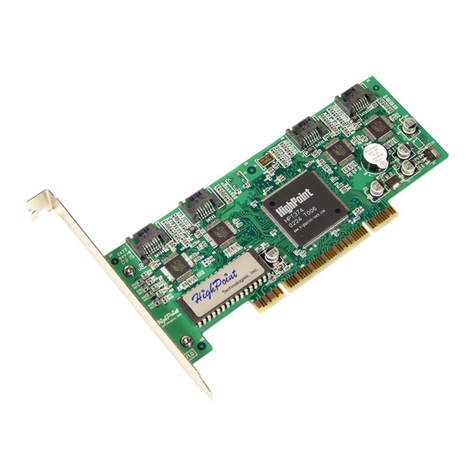
HighPoint
HighPoint RocketRAID 1640 user manual
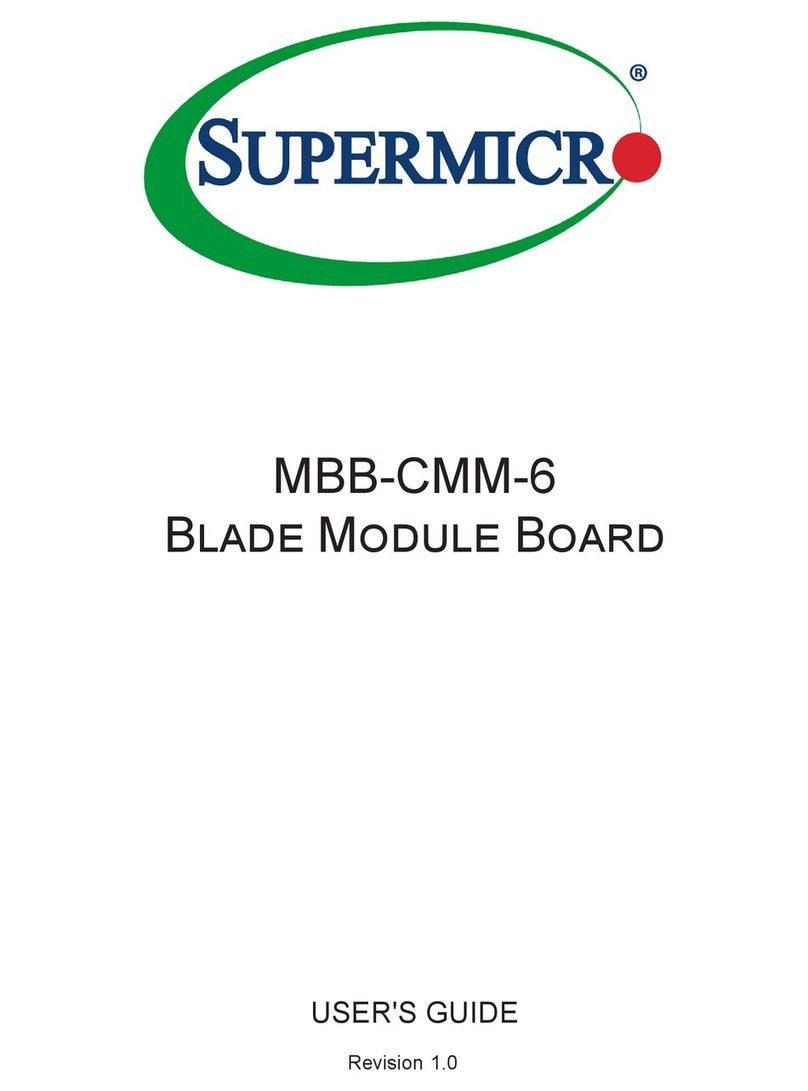
Supermicro
Supermicro MBB-CMM-6 user guide

Hitachi
Hitachi H8/3048 Series Hardware manual
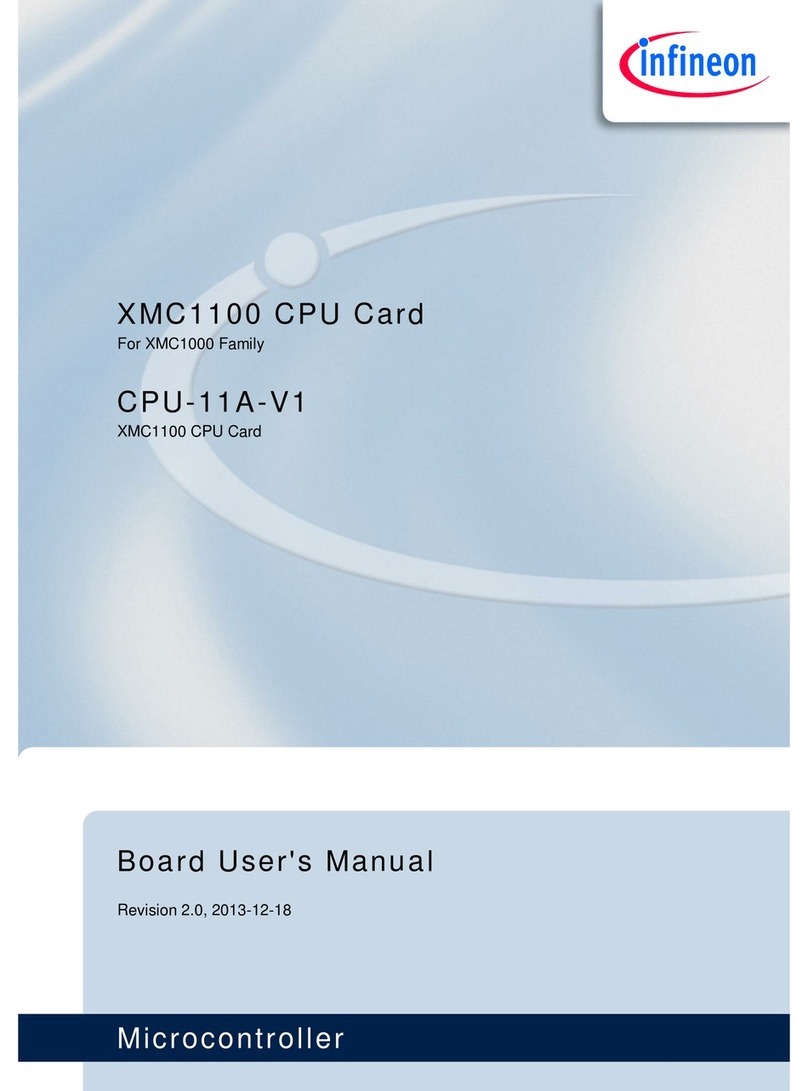
Infineon Technologies
Infineon Technologies XMC1100 user manual
